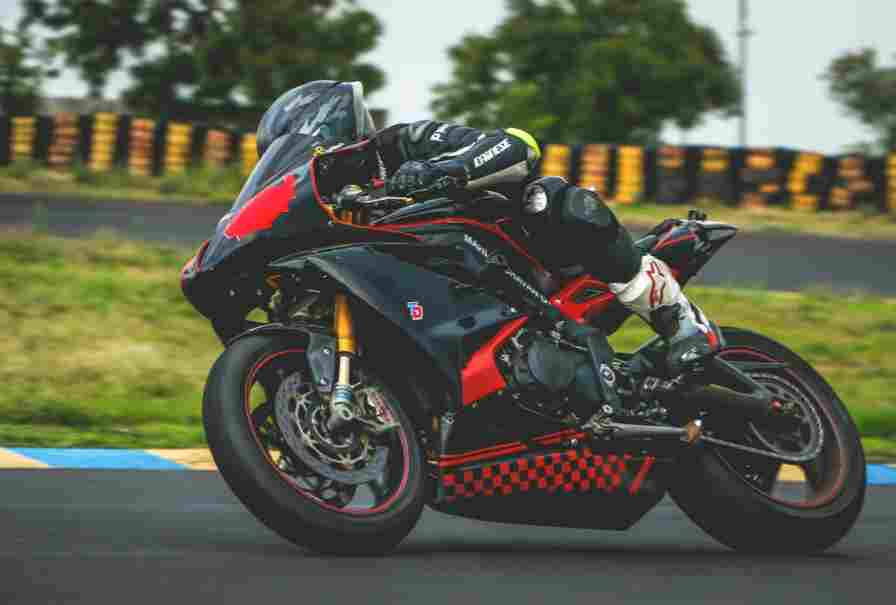
Table of Contents
Introduction
Something new has appeared in busy city streets today, changing how people travel and discover cities. Meet Motosas, a mix of motorcycles and scooters that many riders love for being flexible, efficient, and good for the environment. This article explores everything about Motosas: where they came from, how they’ve changed, what makes them great, safety tips, their impact on nature, rules about them, what’s coming next, and answers to common questions.
Origins and Evolution
Motosas started when intelligent engineers and designers wanted a small but strong vehicle for busy city streets. They mixed the agility of motorcycles with the ease of scooters to create Motosas. Technological improvements and what people wanted made Motosas even better as time passed. They got sleeker, had more features, and worked even faster.
At first, Motosas were simple and had few fancy things. But as people liked them more, they became more high-tech. Early versions focused on being light and easy to move, like scooters, but also fast, like motorcycles. As more people wanted them, companies started using electric engines in Motosas, making them suitable for the environment and using less energy in cities.
What is Motosas
Motosas are unique vehicles that mix motorcycles and scooters. They’re made to be good for getting around in cities, with things like being small, using electricity, and being accessible to move. They’re comfy, easy to use, and good for the environment, which is unconfined for people who want a simple and fun way to travel in cities for short or medium trips.
You can also read about :- Jablw.RV: Home On Wheels For Memorable Travel
You can also read our latest post
Key Features and Benefits
This vehicles have some great features and benefits that set them apart in urban transportation. Thanks to their lightweight build and streamlined design, they’re designed to be compact and easy to maneuver in traffic or tight spaces. Many Motosas use electric engines, which are eco-friendly, quieter, and have lower maintenance costs than traditional gas-powered vehicles.
They also offer smart connectivity, GPS navigation, and smartphone integration for real-time monitoring and alerts about traffic. This makes riding a Motosa more connected and convenient. They’re agile and responsive, giving riders control in various situations, and they’re cost-effective, with lower fuel or electricity costs, reduced insurance, and more straightforward maintenance.
Motosas come in different types, catering to urban commuting, off-road adventures, or long-distance travel, so there’s one to fit various needs and preferences.
Safety Considerations
When you ride a Motosa, remember to wear protective gear like a helmet and follow traffic rules. Motosas also has unique features like brakes that help you stop safely and systems that keep you balanced. These features work together to ensure you stay scratch-free while driving.
Environmental impacts and sustainability.
Motosas are good for the environment. Some run on electricity, so they don’t make dirty air. Others use less gas than regular cars, which helps reduce air pollution and prevent climate change gases. Cities want to be cleaner, so this vehicles are an excellent choice. When people pick electric Motosas instead of regular ones, it helps make cities cleaner. Electric vehicles don’t cause as much pollution, so cities are healthier.
Regulatory Landscape and Future Trends
The increasing popularity of Motosas has prompted discussions and changes in how they are regulated. Governments and policymakers are investigating what kind of licenses riders need, building more places to charge Motosas, making rules about where they can be used in cities, and setting safety standards for electric vehicles. These efforts aim to ensure that Motosas are safely and responsibly added to city transportation systems.
In the future, this vehicles are expected to improve in several ways. This includes making batteries last longer and enabling Motosas to travel farther on one charge. They might also become more advanced, with features like being able to ride themselves and working with city systems to navigate and manage traffic better. They could also offer better ways for riders to connect with city services. Manufacturers are also looking into using eco-friendly materials, making this vehicles easier to customize, and finding new ways to store things on them, all to make Motosas more appealing to more people.
Complications WITH this vehicles:-
- Need for More Charging Stations: We must build more places where this vehicles can be charged, just like your phone needs a charger. With enough of these stations, it’s easier for people to use Motosas.
- Confusing Rules: Sometimes, the rules about using this vehicles are unclear or different in different places. This can make it tricky for people to know what they can and can’t do with their Motosas.
- Staying Safe: Riding Motosas can be fun, but we need to ensure people wear the right gear and ride safely. We also need to use technology to make Motosas safer, like systems that help avoid accidents.
- Protecting the Environment: While Motosas are better for the environment than some other vehicles, we still need to consider things like how we dispose of old batteries and where we get the energy to power electric vehicles.
- Fitting into Cities: Cities can be crowded, and adding Motosas to the mix means we need to consider how they interact with cars, buses, and people walking. We need to plan cities that make it easy and safe for everyone to get around, including Motosa riders.
The key features of Motosas include:
- Small and Light: This vehicles are small and easy to move around because they’re not heavy.
- Battery-Powered: Many Motosas run on batteries, meaning they are quieter and don’t cause pollution.
- Easy to Drive: They’re good at turning and fitting into small spaces so you can drive them in busy areas.
- Can Do Many Things: This vehicles are versatile and good for going to work, running errands, or exploring the city.
- Simple to Handle: They’re easy to park, speed up quickly, and don’t need much fixing.
- Safe to Use: New this vehicles have safety features like good brakes, control systems for stability, and bright lights to see better at night.
- Connects with Phones: Some vehicles can connect with your phone to provide maps or other helpful features while you ride.
- Good for Nature: Electric motors don’t dirty the air, which is good for the environment.
- Saves Money: A motorcycle can be cheaper than a regular car because it uses less fuel and needs less maintenance.
- Can Be Customized: You can customize the look of your Motosa and add extra storage or a shield to protect it from the wind.

disadvantages
- Limited Range: Electric vehicles can’t go as far as cars on a single charge, so you might need to plan your trips carefully or find charging stations.
- Slower Speeds: Some vehicles are slower than cars, especially on highways, which can make longer trips take more time.
- Less Space: They have less room for passengers or carrying things than cars or trucks, so they might not be suitable for large families or bulky items.
- Weather Limitations: Bad weather, like rain or snow, can make riding a Motosa uncomfortable or unsafe, unlike cars, which offer more protection.
- Limited Terrain: This vehicles are best suited for city or paved roads; they might not handle rough off-road conditions as well as other vehicles like dirt bikes or ATVs.
conclusion
In short, Motosas are a big step forward in city travel. They’re efficient, eco-friendly, and flexible, which people today like. From simple beginnings to today’s high-tech designs, Motosas are more than just vehicles; they’re about exploring cities, caring for the environment, and finding personal ways to get around.
As cities focus more on eco-friendly travel, This vehicles is an excellent option for those who want something different from regular cars. They’re small, easy to move, use clean electric power, and have innovative features that help in city traffic, all while reducing pollution.
This vehicles will keep improving with new tech, safety features, and ways to connect with other devices. As makers and rules change, Motosas will be a crucial part of cities’ progress.
Whether you’re commuting, going on trips, or wanting to help the environment, Motosas are not just for travel; they’re a lifestyle choice about being innovative, accessible, and mindful of city life. Choosing this vehicles means choosing a cleaner, better way to get around in cities.
FAQs
What are Motosas?
Motosas are excellent vehicles that mix motorcycles and scooters for comfy and stylish rides.
How are Motosas different from regular motorcycles?
This vehicles are easier to handle, have more storage space, and are better for city travel than regular motorcycles.
Can beginners ride Motosas?
Yes, this vehicles are beginner-friendly, with straightforward controls and features for new riders.
Do you need a special license for Motosas?
It depends on where you live and the Motosa type. Sometimes, a regular driver’s license is enough.
How far can a Motosa go on one charge?
Most electric vehicles can travel between 50 to 100 miles on one charge, but this varies.
How long does tuition at a Motosa take?
The time needed to charge a Motosa depends on the type of charger used. Fast chargers can take a few hours, while slower ones may require more time.
Are this vehicles good for the environment?
Electric Motosas don’t pollute like gas vehicles, making them eco-friendly.
Can you use this vehicles for commuting?
This vehicles are great for city commutes due to their size and fuel efficiency.
What safety gear is needed for Motosa riders?
To ride a Motosa safely, wear a helmet, gloves, durable shoes, and a protective suit to prevent scratches or injuries.
Are there different types of Motosas?
Yes, like electric, gas-powered, off-road, and street-legal Motosas, each serving different purposes.


